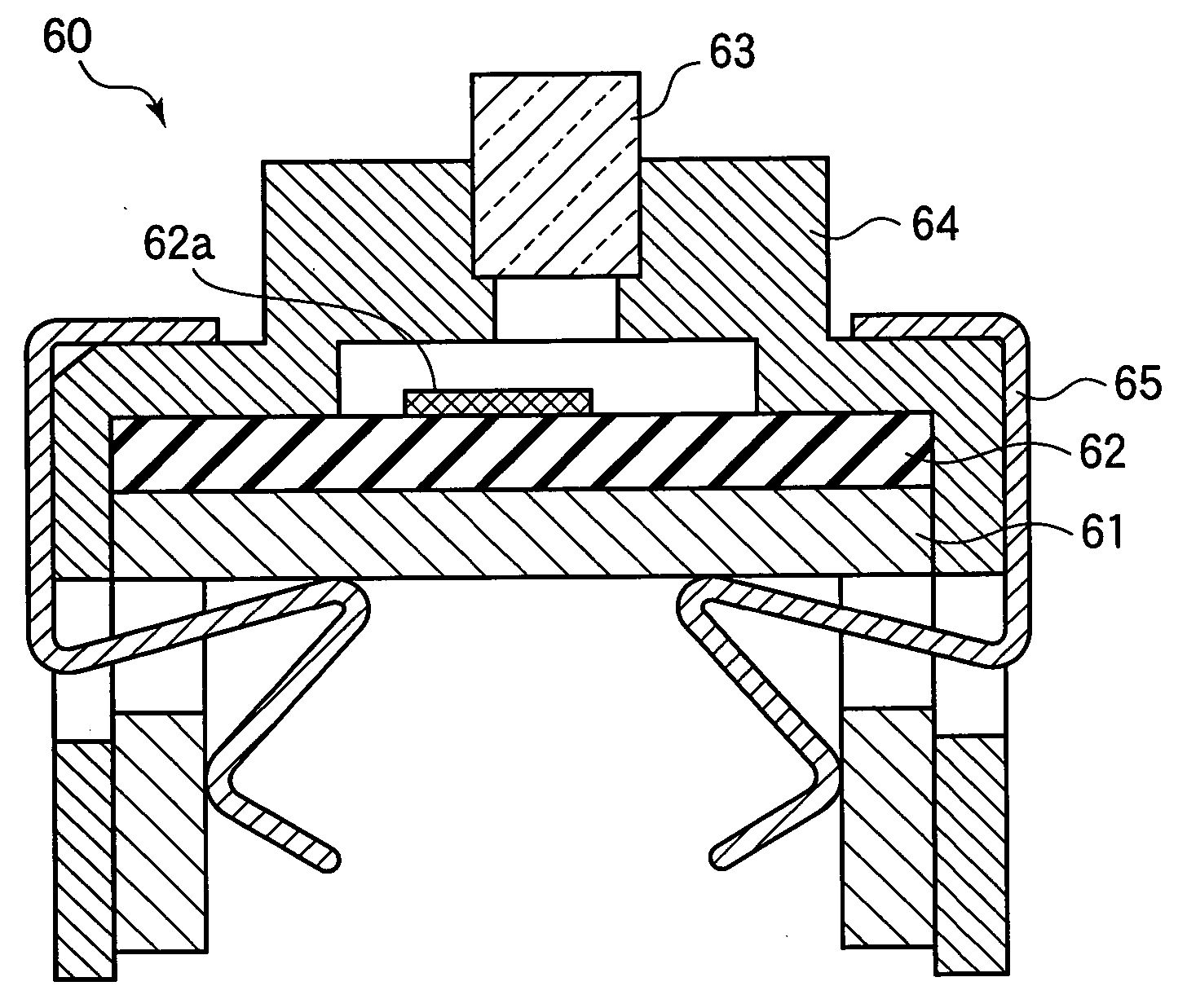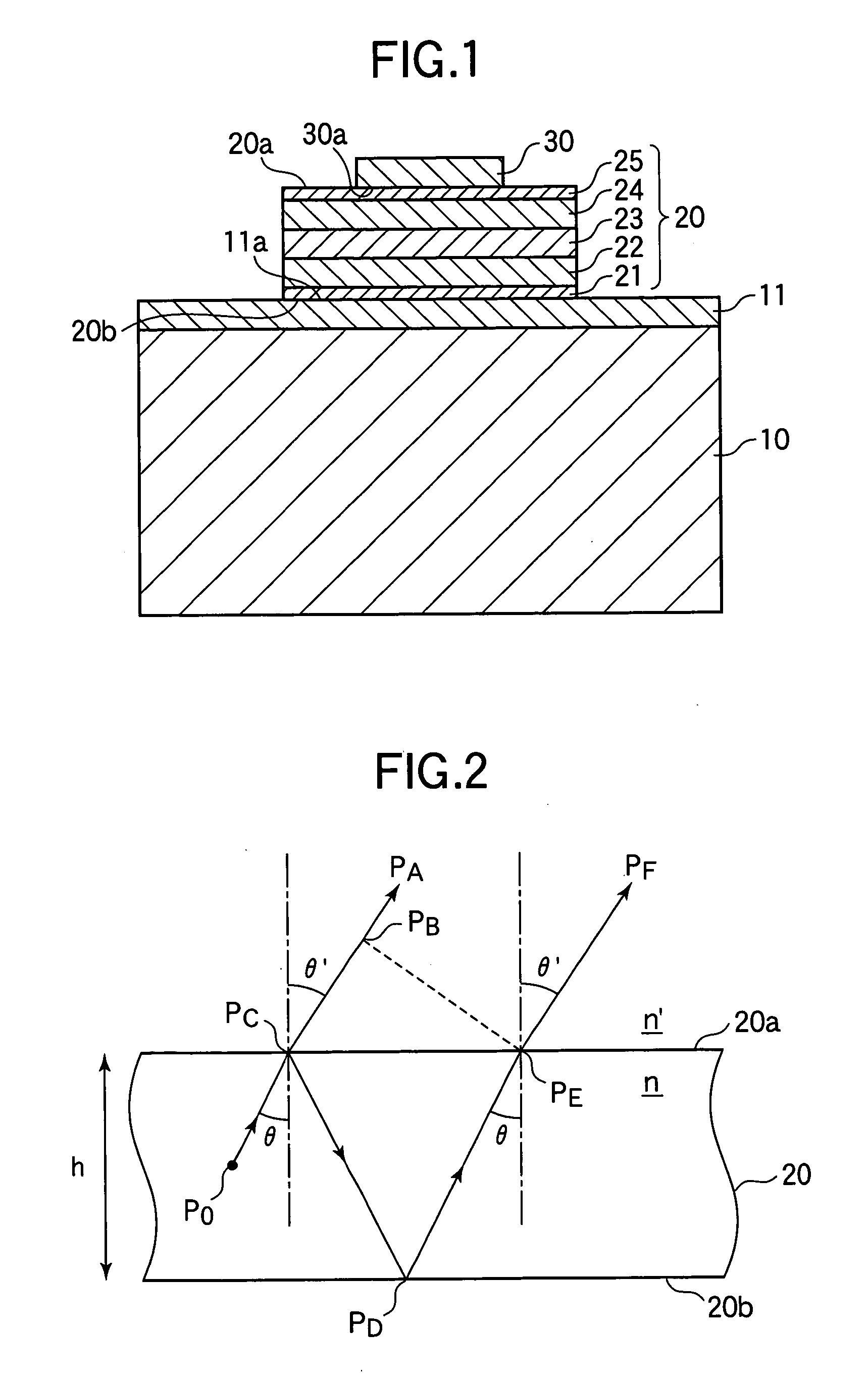Semiconductor light-emitting device
a semiconductor and light-emitting device technology, applied in the direction of lasers, semiconductor lasers, printing, etc., can solve the problems of large scattering in the light-emitting properties of semiconductor light-emitting devices, interference may occur,
- Summary
- Abstract
- Description
- Claims
- Application Information
AI Technical Summary
Benefits of technology
Problems solved by technology
Method used
Image
Examples
first embodiment
FIG. 1 is a cross-sectional view schematically showing the construction of a semiconductor light-emitting device according to a first embodiment of the present invention. As shown in FIG. 1, the semiconductor light-emitting device according to the first embodiment includes a support 10, a metal layer 11 provided on the support 10, an LED epitaxial film (also referred to as “LED epi-film”) 20 which is a semiconductor light-emitting thin film disposed on the metal layer 11, and an electrode 30 disposed on the LED epitaxial film 20.
The support 10 may, for example, include a dielectric such as glass, a semiconductor such as Si (silicon), or a conductor such as Al (aluminum). The thickness of the support 10 may be given a value, for example, within a range of 10 μm-18 μm. The metal layer 11 may be formed from an electrically conducting metal such as Al or the like. However, the metal layer 11 can also be formed from another electrically conducting material which can be ohmically connec...
second embodiment
FIG. 6 is a perspective view schematically showing the construction of a semiconductor light-emitting device according to a second embodiment of the present invention. FIG. 7 is a cross-sectional view schematically showing a section through a line S7-S7 in FIG. 6. In FIG. 6 and FIG. 7, identical symbols are assigned to identical or corresponding parts of the construction of FIG. 1.
As shown in FIG. 6 and FIG. 7, the semiconductor light-emitting device according to the second embodiment includes a support 10, a metal layer 11 provided on the support 10, plural LED epitaxial films 20 (in FIG. 6, four are shown but the invention is not limited to four) arranged in one row on the metal layer 11, an insulating film 26 disposed on the LED epitaxial film 20, and an electrode 30 connected on the LED epitaxial film 20 via a contact hole 26a formed in the insulating film 26. The electrode 30 is connected to an electrode pad 31 disposed on the insulating film 26. The semiconductor light-emitt...
third embodiment
FIG. 8 is a cross-sectional view schematically showing the construction of an LED head according to a third embodiment of the present invention. As shown in FIG. 8, an LED head 60 includes a base member 61, an LED unit 62 fixed on the base member 61, a rod lens array 63 including pillar-shaped optical elements arranged in plural rows, a holder 64 which holds the rod lens array 63, and a clamp 65 which fixes these structures 61-64. The LED unit 62 includes an LED array chip (or LED / driving-IC chip) 62a. The LED array chip 62a includes one or more of the semiconductor light-emitting devices of the first or second embodiments arranged in plural rows. Light generated by the LED array chip 62a is emitted outside via the rod lens array 63. The LED head 60 is used as a light exposure device for forming an electrostatic latent image in an electrophotographic printer or an electrophotographic copier. The construction of the LED head including the semiconductor light-emitting device of the fi...
PUM
 Login to View More
Login to View More Abstract
Description
Claims
Application Information
 Login to View More
Login to View More - R&D
- Intellectual Property
- Life Sciences
- Materials
- Tech Scout
- Unparalleled Data Quality
- Higher Quality Content
- 60% Fewer Hallucinations
Browse by: Latest US Patents, China's latest patents, Technical Efficacy Thesaurus, Application Domain, Technology Topic, Popular Technical Reports.
© 2025 PatSnap. All rights reserved.Legal|Privacy policy|Modern Slavery Act Transparency Statement|Sitemap|About US| Contact US: help@patsnap.com



